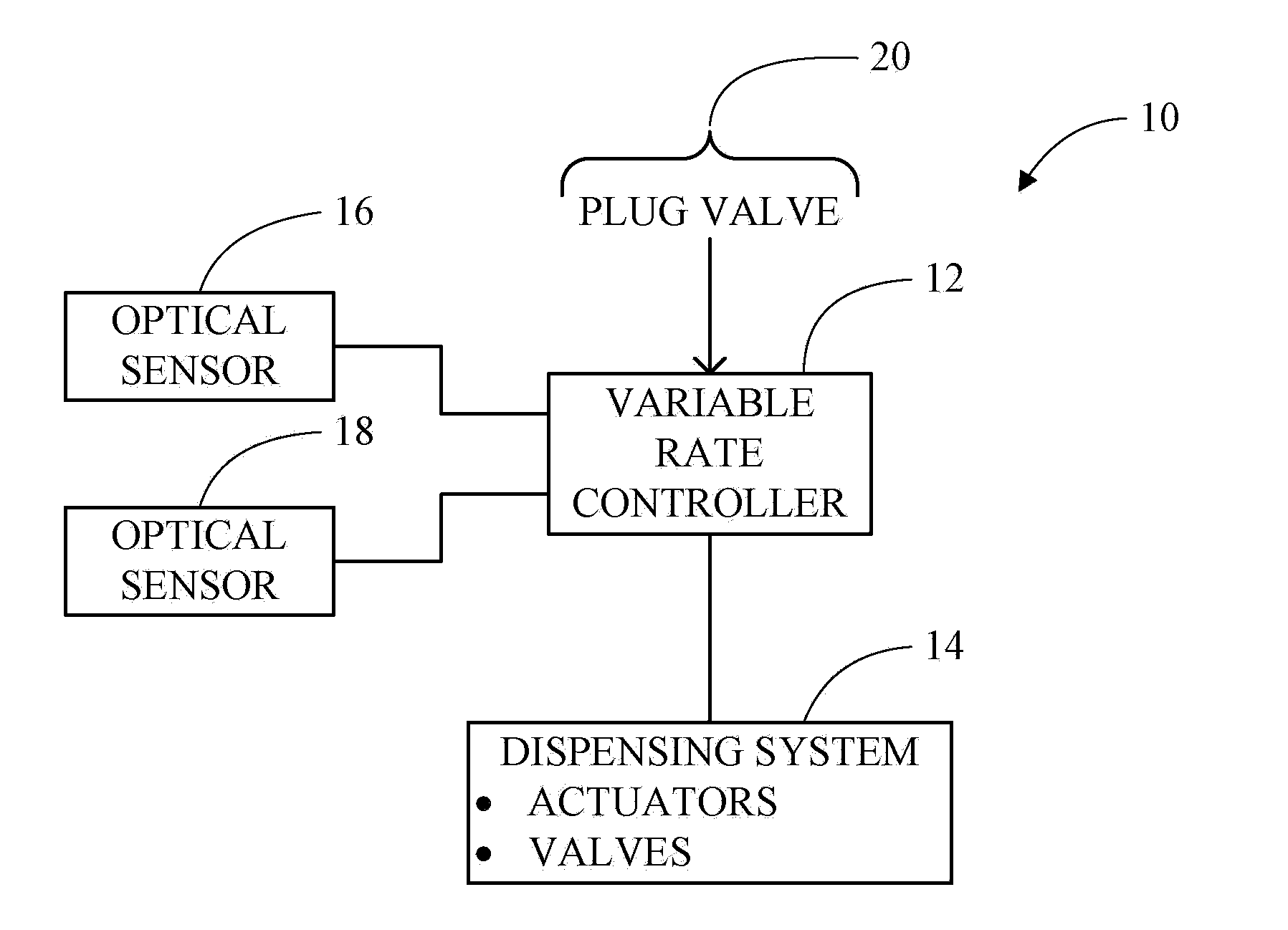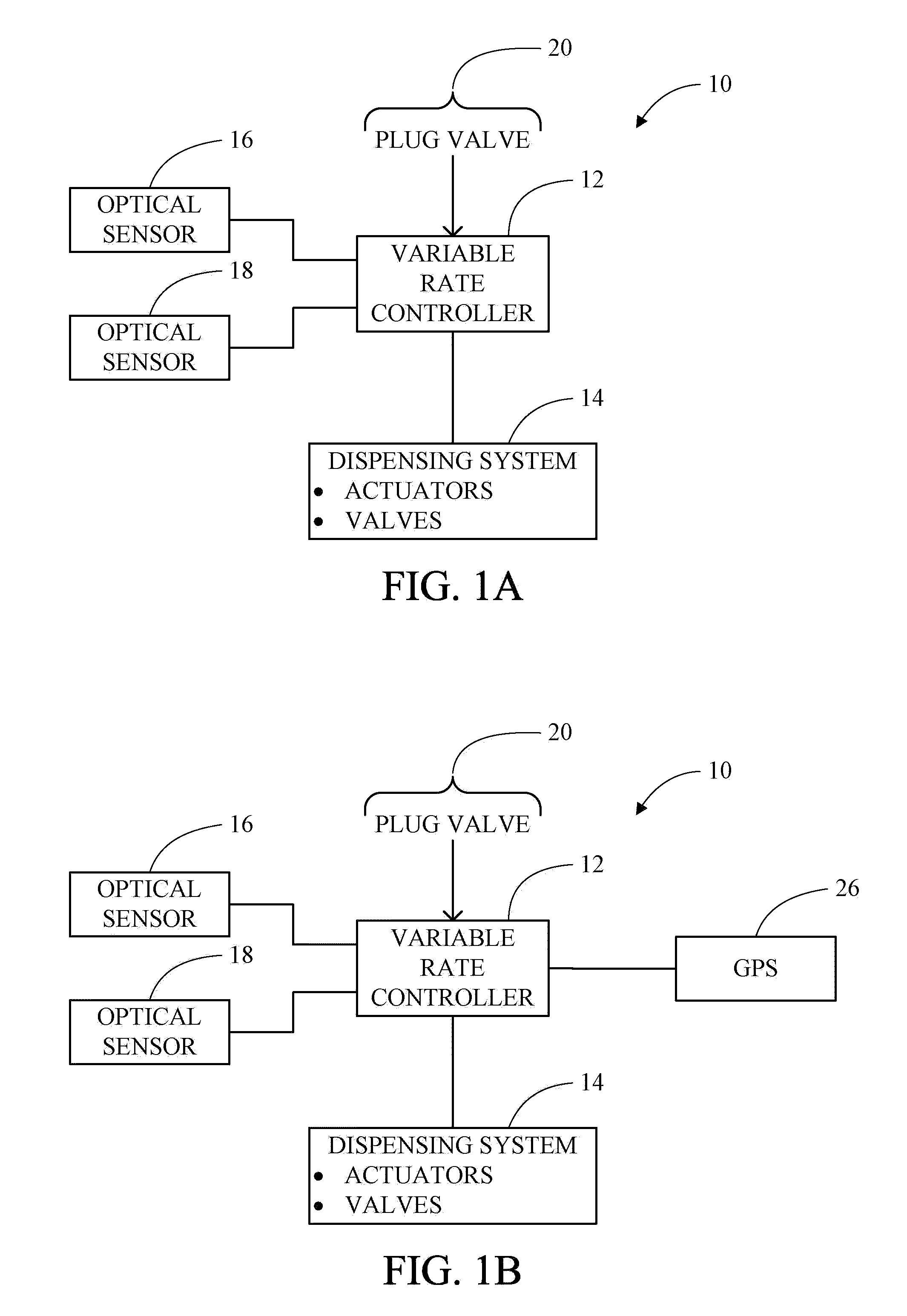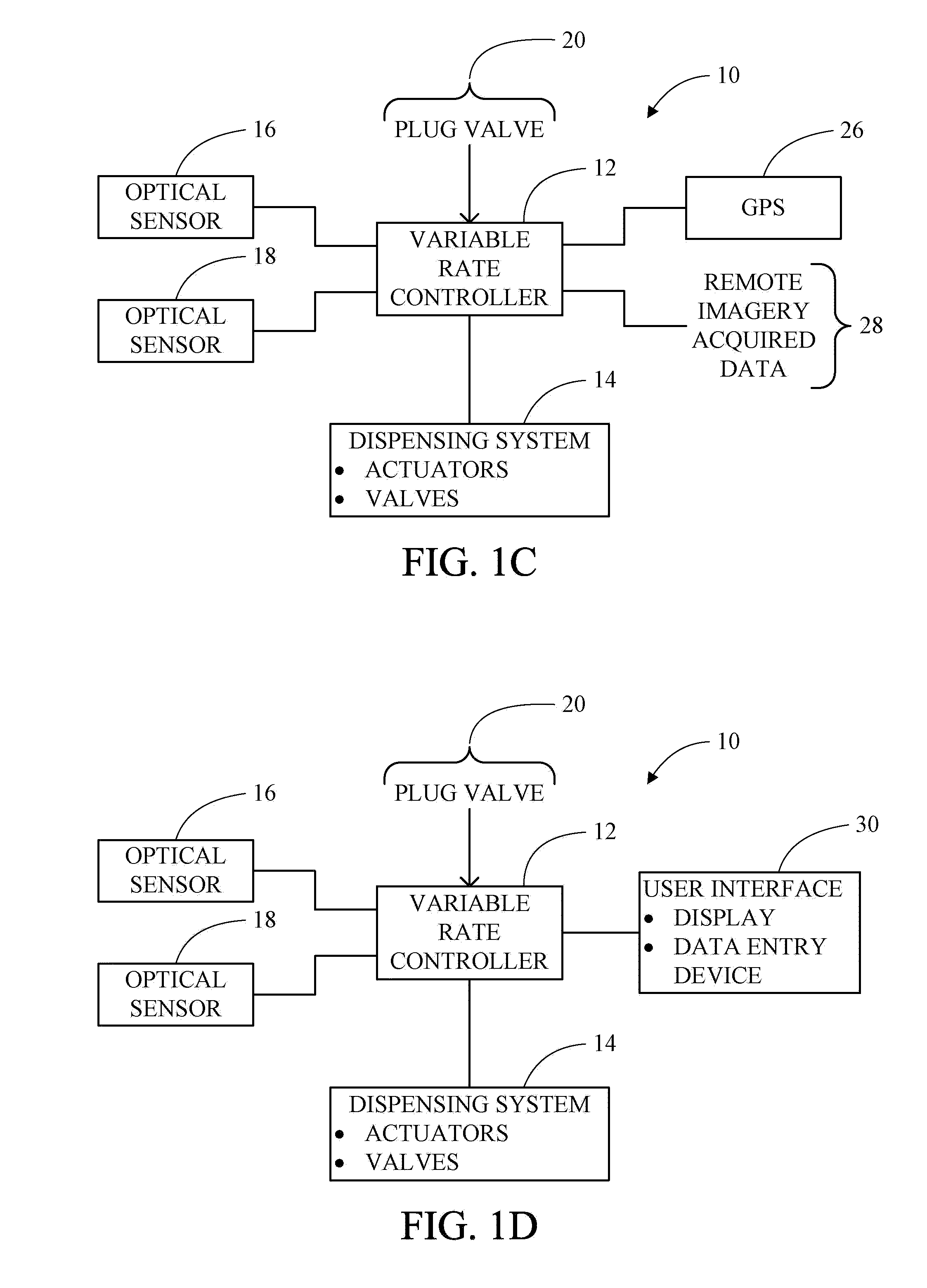Sensor-based chemical management for agricultural landscapes
a sensor-based, agricultural technology, applied in the direction of navigation instruments, instruments for comonautical navigation, instruments, etc., can solve the problems of crop producers not willing to perform the steps needed to calibrate, inconvenient calibration,
- Summary
- Abstract
- Description
- Claims
- Application Information
AI Technical Summary
Benefits of technology
Problems solved by technology
Method used
Image
Examples
example 1
[0086]A grower decides to variably apply nitrogen to a field. He decides to apply 100 kg / ha on average and that his maximum and minimum rates should be 50 and 150 kg / ha, respectively. These parameters are loaded into the variable rate controller located inside his tractor. Next, the grower drives several transect through his field to collect crop growth information, see FIG. 5. Note, the coefficients in equation 1 become: SApp equal 100 kg / ha, G equal 50 kg / ha, k equal 1.0 and for simplicity function ƒ(α) is the function argument α, equation 2, (normally ƒ(α) would be a curvilinear function that would characterize the growth behavior of the crop). The parameters for the variable α are determined via the transects through the field and will be bounded so as to produce a range of values between −0.5 and 0.5 around the field average. Equation 1 is now has the following form:
SRate=100+50·α (6)
He then proceeds to drive the field and apply nitrogen to his crop. At the sensing extremes, t...
example 2
[0087]Now consider the previous example but this time allowance for real-time zone factor adjustment of the application rate is performed with the use of a soil sensor 50 in FIG. 6. The VRA system is driven through the as was done in example 1 above in order to collect crop biomass information, see FIG. 7. After the crop data has been collected, VRA system changes to the application mode to apply material to the crop. Material application is now based on both crop sensor readings and soil sensor readings. In this example the soil sensor 50 is a reflectance sensor that produces an NDVI output that is proportional to soil color. The output of the soil sensor is fed into a look up table that will be used to generate values for the zone factor k. A typical look-up table may take on the form as shown in Table 4.
TABLE 4Real-time zone factor look-up tablebased on soil NDVI measurements.Soil NDVIZone Factor, k 0 1.00.3 0.870.35 0.750.385 0.5NDVI > 0.410.25
A similar table can be created for ...
example 3
[0088]A grower decides to variably apply nitrogen to a field. His application system uses a generalized plant growth function that is parameterized in terms of sensor values and optimum nitrogen use and the system uses a growth stage appropriate plug value for an initial VIRef calibration. His application system also incorporates the use an auto steer system to guide his vehicle through the field. The auto steer system will cause the applicator to maintain optimal sensor position over the crop rows. He decides that the optimal N rate to apply is 150 kg / ha on and that his maximum and minimum rates should be 250 and 100 kg / ha, respectively. Since he has already applied 50 kg / ha at planting, he sets his optimal N rate to 100 kg / ha. These parameters are loaded into the variable rate controller located inside his tractor. Next, the grower drives into the field and the applicator system starts to apply N to his crops. The controller will continually search for a better VIRef value as he d...
PUM
 Login to View More
Login to View More Abstract
Description
Claims
Application Information
 Login to View More
Login to View More - R&D Engineer
- R&D Manager
- IP Professional
- Industry Leading Data Capabilities
- Powerful AI technology
- Patent DNA Extraction
Browse by: Latest US Patents, China's latest patents, Technical Efficacy Thesaurus, Application Domain, Technology Topic, Popular Technical Reports.
© 2024 PatSnap. All rights reserved.Legal|Privacy policy|Modern Slavery Act Transparency Statement|Sitemap|About US| Contact US: help@patsnap.com










